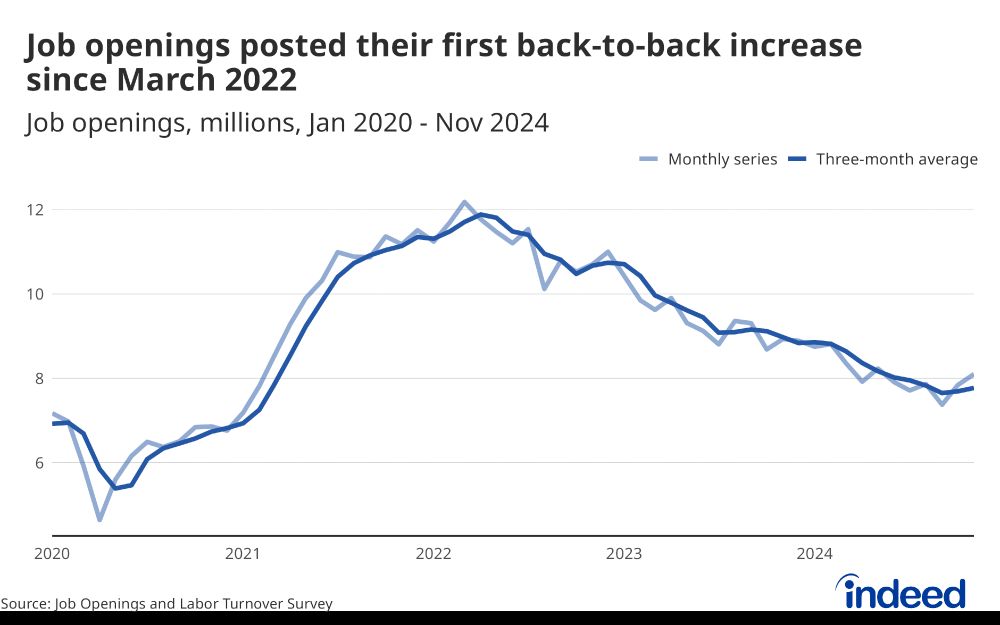
During the post-pandemic hiring boom of 2021 and 2022, job postings and quits surged, and employers sped up hiring to lock in workers. The labor market has cooled since then, and hiring is taking longer.
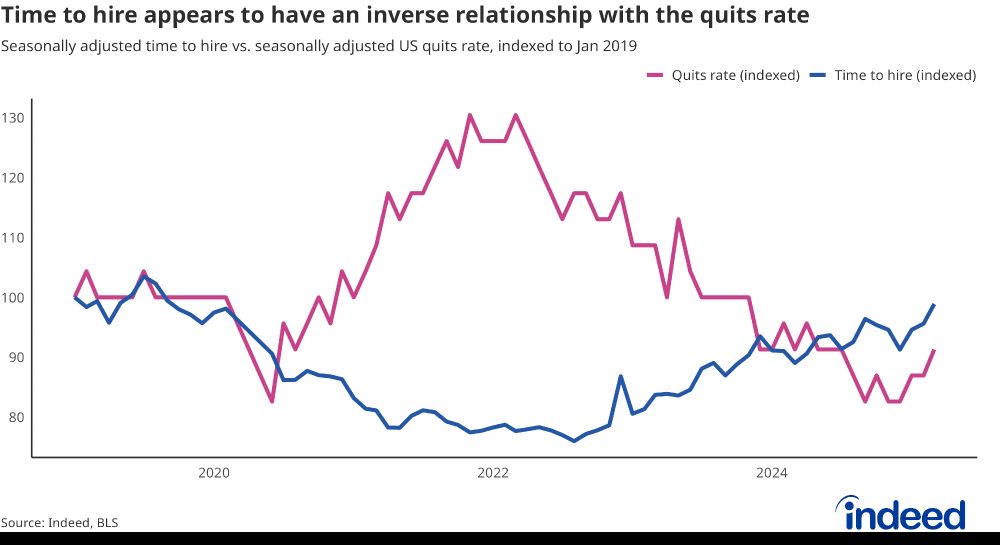
During the post-pandemic hiring boom of 2021 and 2022, job postings and quits surged, and employers sped up hiring to lock in workers. The labor market has cooled since then, and hiring is taking longer.
The share of workers who were long-term unemployed (out of work for 27 weeks or more) continues to creep up and jumped to 23.5% in April, the highest share in three years.
#numbersday

The share of workers who were long-term unemployed (out of work for 27 weeks or more) continues to creep up and jumped to 23.5% in April, the highest share in three years.
#numbersday
- Jobs: Up 177k
- Unemployment: Flat at 4.2%
- Healthcare jobs: +51k, transportation and warehousing: +29k, federal government: -9k
Good for now, but the market can’t escape rapidly souring business and consumer confidence forever.
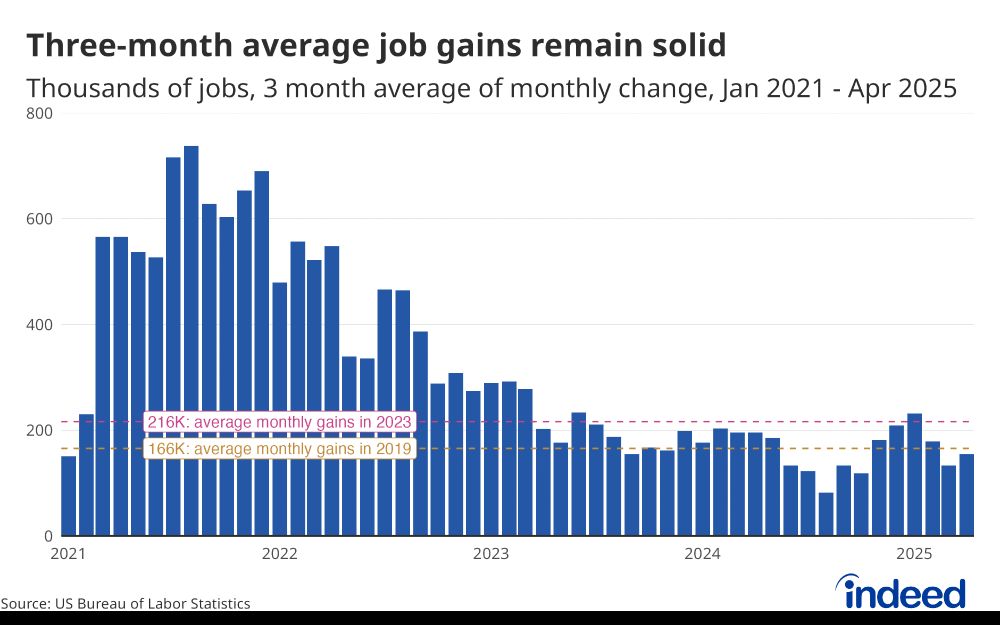
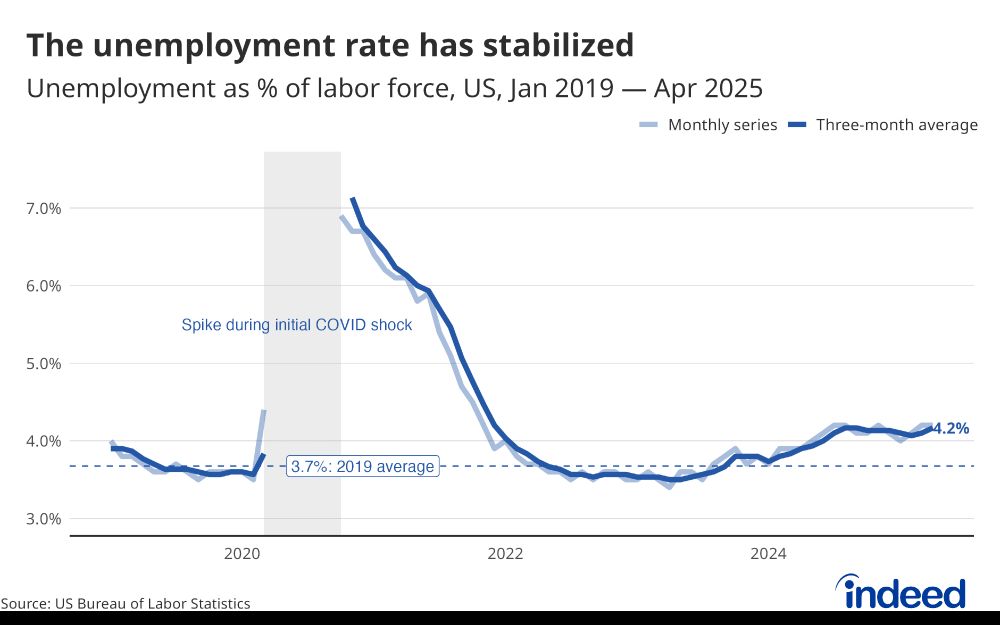
- Jobs: Up 177k
- Unemployment: Flat at 4.2%
- Healthcare jobs: +51k, transportation and warehousing: +29k, federal government: -9k
Good for now, but the market can’t escape rapidly souring business and consumer confidence forever.
- Job openings: Down 288k from Feb, but down 901k from Mar 2024.
- Layoffs: Low overall at 1.0%
- Hires rate: Stable near 2013 levels
- Quits: Trending up so far this year, now at 2.1%


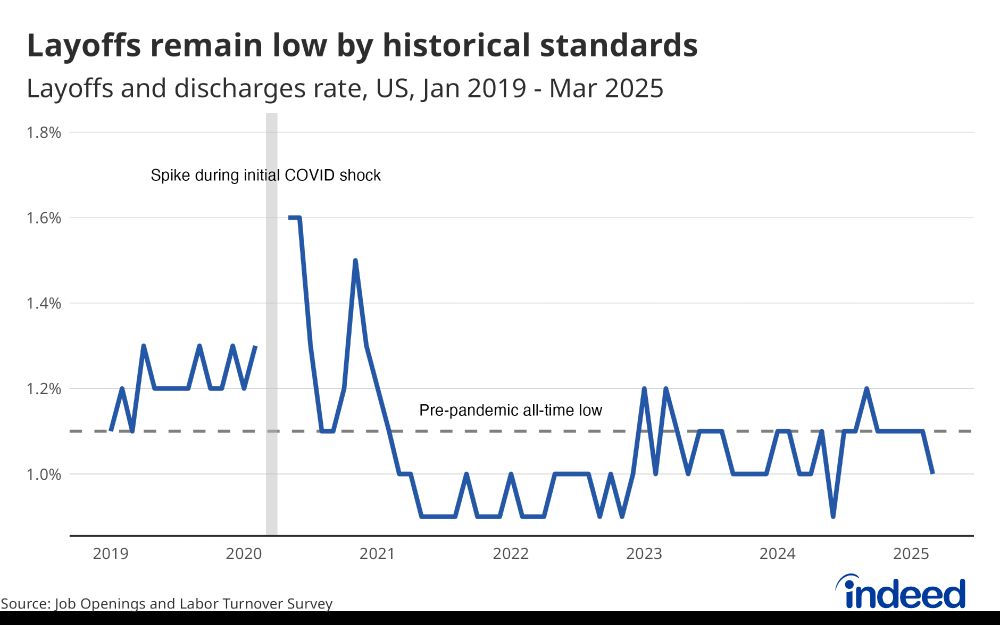

- Job openings: Down 288k from Feb, but down 901k from Mar 2024.
- Layoffs: Low overall at 1.0%
- Hires rate: Stable near 2013 levels
- Quits: Trending up so far this year, now at 2.1%
A lot has obviously happened since January that didn't show up in this report. More recent data from the Indeed Job Postings Index suggests a potential scenario of renewed cooling in the coming months.

A lot has obviously happened since January that didn't show up in this report. More recent data from the Indeed Job Postings Index suggests a potential scenario of renewed cooling in the coming months.
Weekly hours have been in steady decline since late 2021, but have dropped more sharply in recent reports.
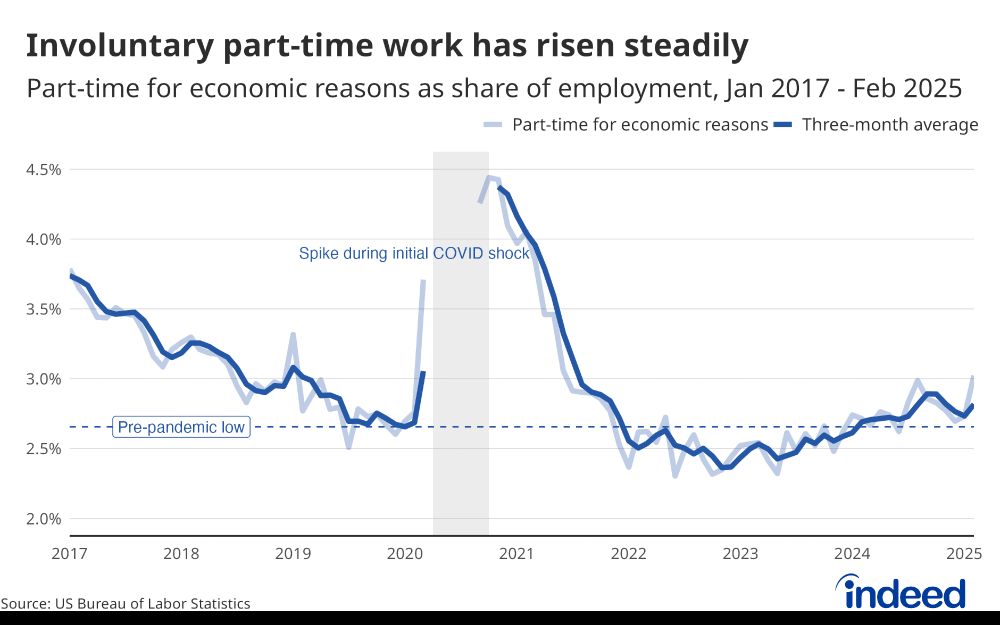

Weekly hours have been in steady decline since late 2021, but have dropped more sharply in recent reports.
Prime-age labor force participation is trending down and for men is back to where it was before the pandemic.


Prime-age labor force participation is trending down and for men is back to where it was before the pandemic.
- Solid headline job growth numbers: +151,000
- Unemployment ticked up to 4.1% but remains low
- Federal employment fell by 10,000, but the total number was likely higher, given data collection that happened relatively early in February.
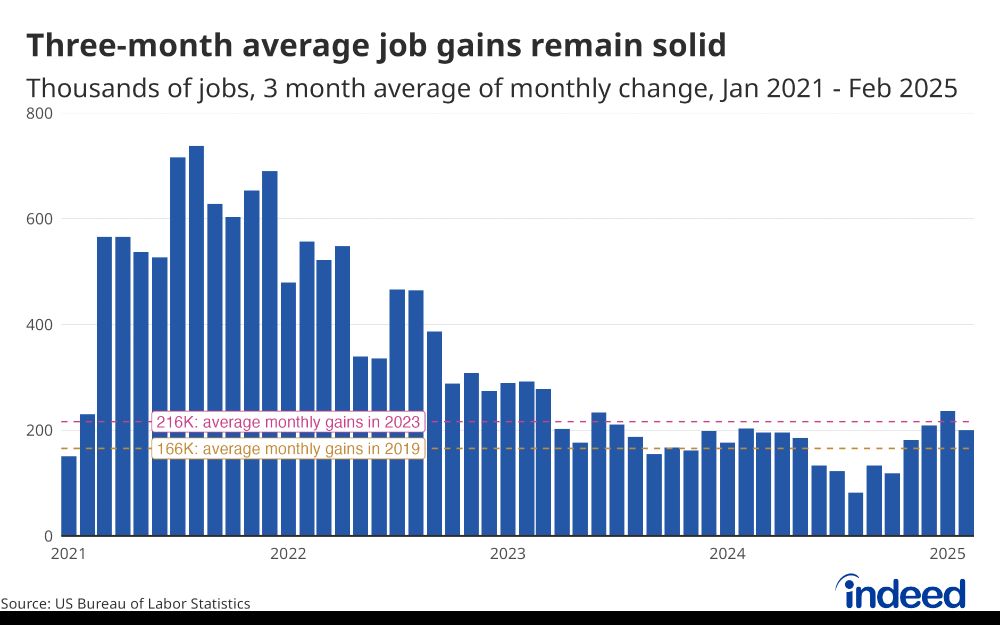
- Solid headline job growth numbers: +151,000
- Unemployment ticked up to 4.1% but remains low
- Federal employment fell by 10,000, but the total number was likely higher, given data collection that happened relatively early in February.

This is still a solid labor market defined by low unemployment, low layoffs, and payroll gains above the estimated 100,000 needed to keep up with population growth.
#numbersday


This is still a solid labor market defined by low unemployment, low layoffs, and payroll gains above the estimated 100,000 needed to keep up with population growth.
#numbersday
- Quits rate low but unchanged @ 2%
- Hires rate low but unchanged @ 3.4%
Read my full statement here: www.hiringlab.org/2025/02/04/d...
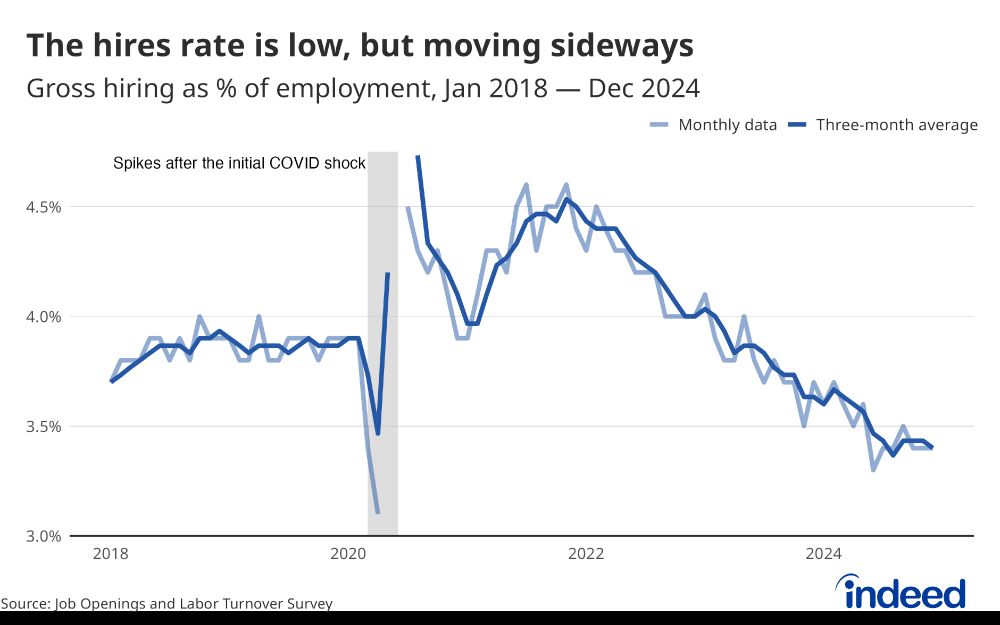
- Quits rate low but unchanged @ 2%
- Hires rate low but unchanged @ 3.4%
Read my full statement here: www.hiringlab.org/2025/02/04/d...
- YoY private-sector wage growth down to 3.6% in Q4 (compared to 4.3% the year before)
- Clear quarterly and annual slowing for among ex-incentive paid jobs
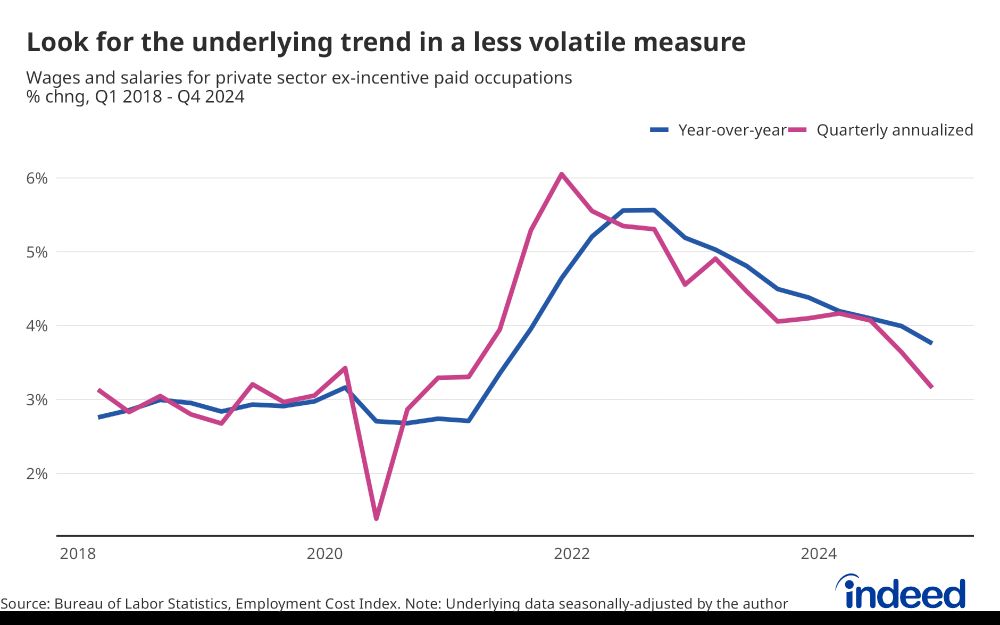
- YoY private-sector wage growth down to 3.6% in Q4 (compared to 4.3% the year before)
- Clear quarterly and annual slowing for among ex-incentive paid jobs
For now, I would characterize 2024 as a tale of two halves. Some concerns around rising unemployment, declining hires & quits in the first half of the year. Started seeing signs of stabilizing in the second half though.

For now, I would characterize 2024 as a tale of two halves. Some concerns around rising unemployment, declining hires & quits in the first half of the year. Started seeing signs of stabilizing in the second half though.
- Job gains beat expectations, up +256,000
- Unemployment is down to 4.1%, but more importantly, it seems to be stable over the last 6 months.
- Prime-age EPOP still concerning and looking dangerously close to reversing its multi-year increasing trend.
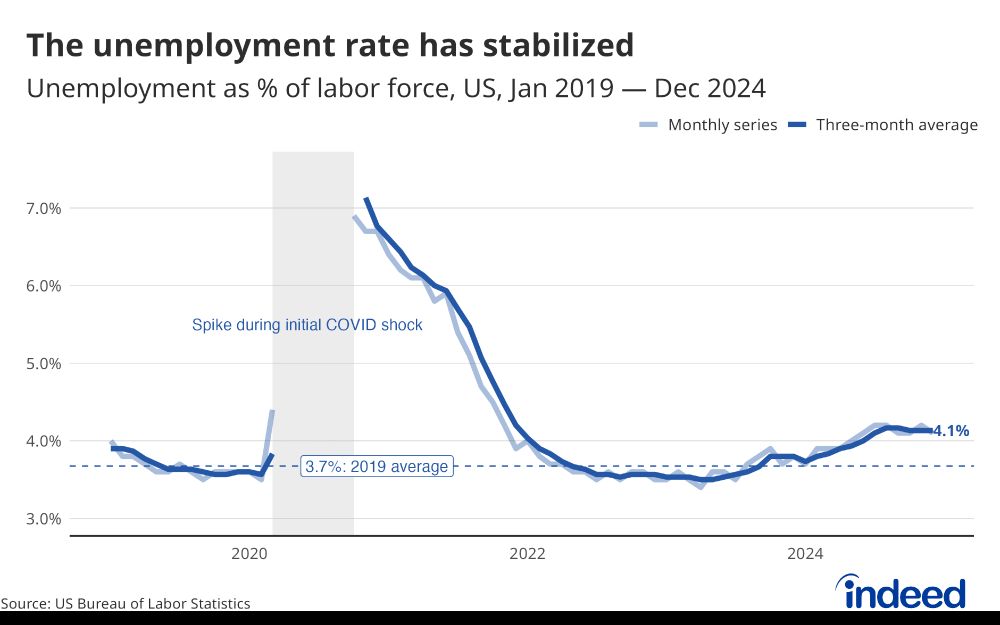
- Job gains beat expectations, up +256,000
- Unemployment is down to 4.1%, but more importantly, it seems to be stable over the last 6 months.
- Prime-age EPOP still concerning and looking dangerously close to reversing its multi-year increasing trend.
In short, retail workers aren't quitting or getting laid off.
Retail layoffs are much lower now than pre-pandemic (1.1% in Nov 2024 vs. 1.9% in Feb 2020). Quits are also down from 3.4% in 2020 to 2.5% today.
#jolts #bls #econsky

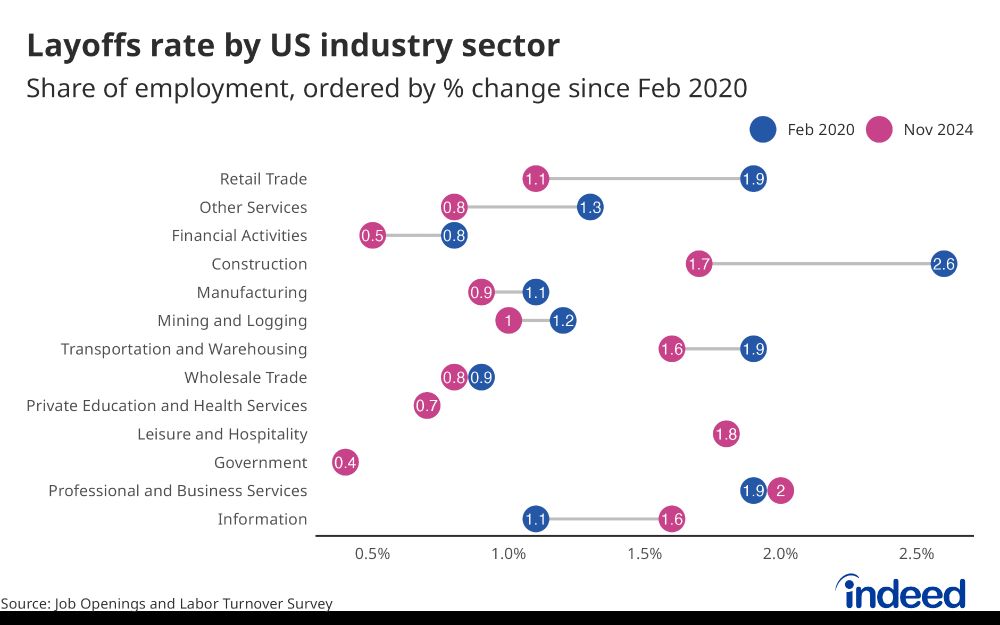
The hires rate for retail workers in today's JOLTS report was 3.9%, well below the 5.4% pre-pandemic rate.
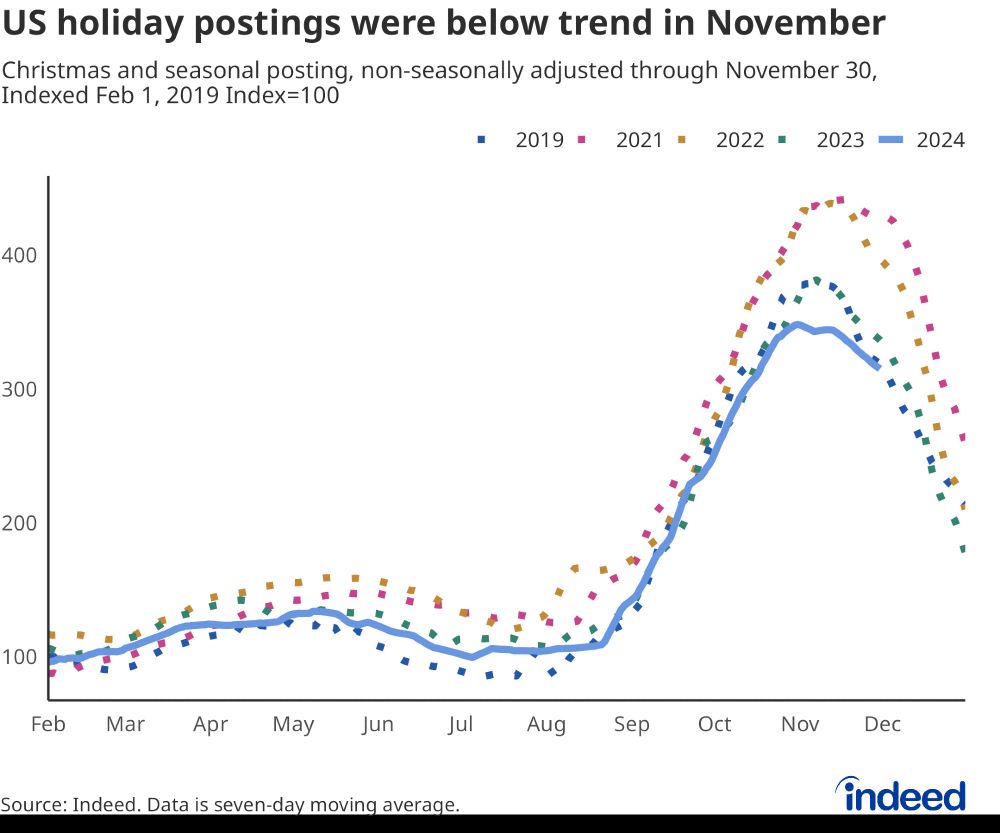
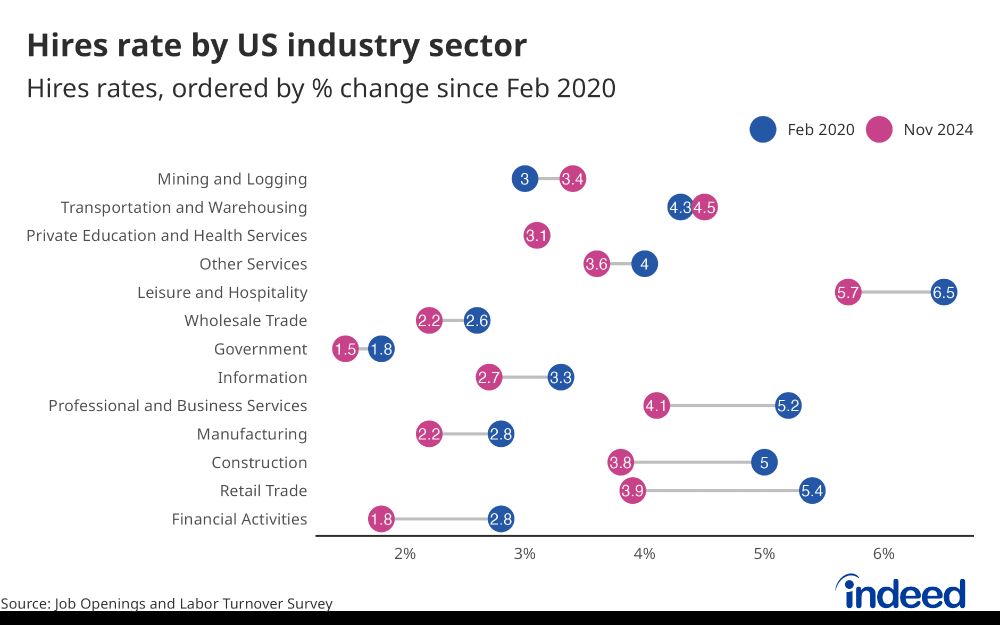
The hires rate for retail workers in today's JOLTS report was 3.9%, well below the 5.4% pre-pandemic rate.
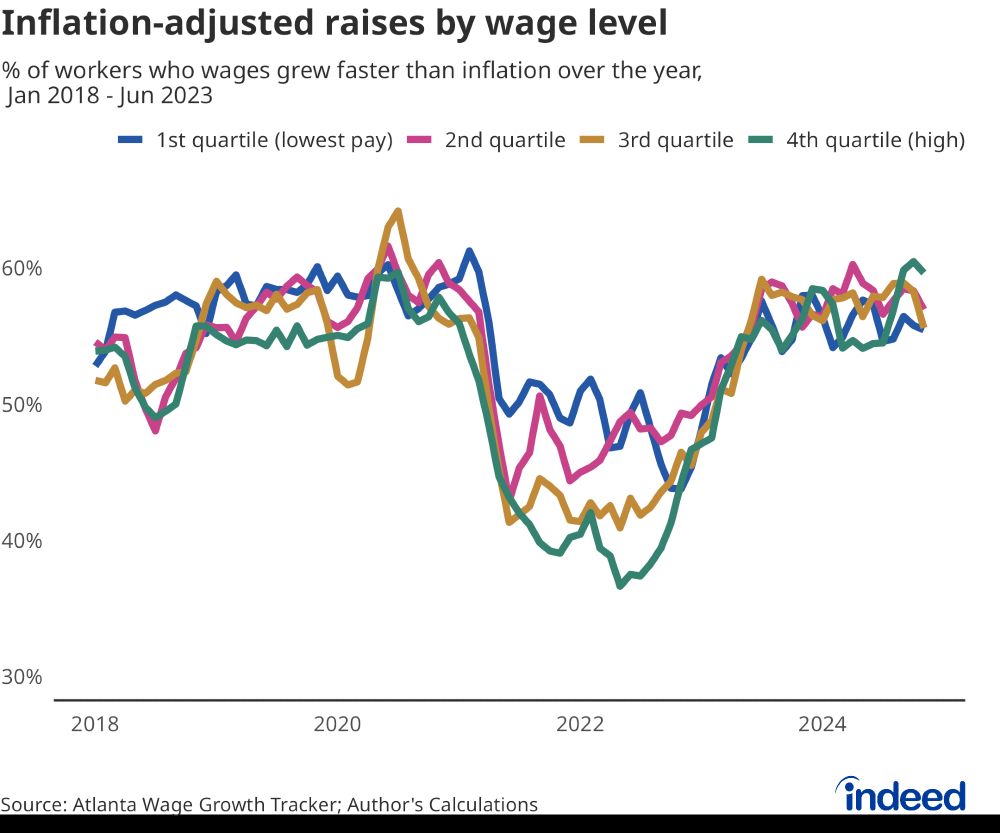
That is much higher than a 43% low in May 2022. However, the share has leveled off since summer 2023 and now sits around pre-pandemic levels.
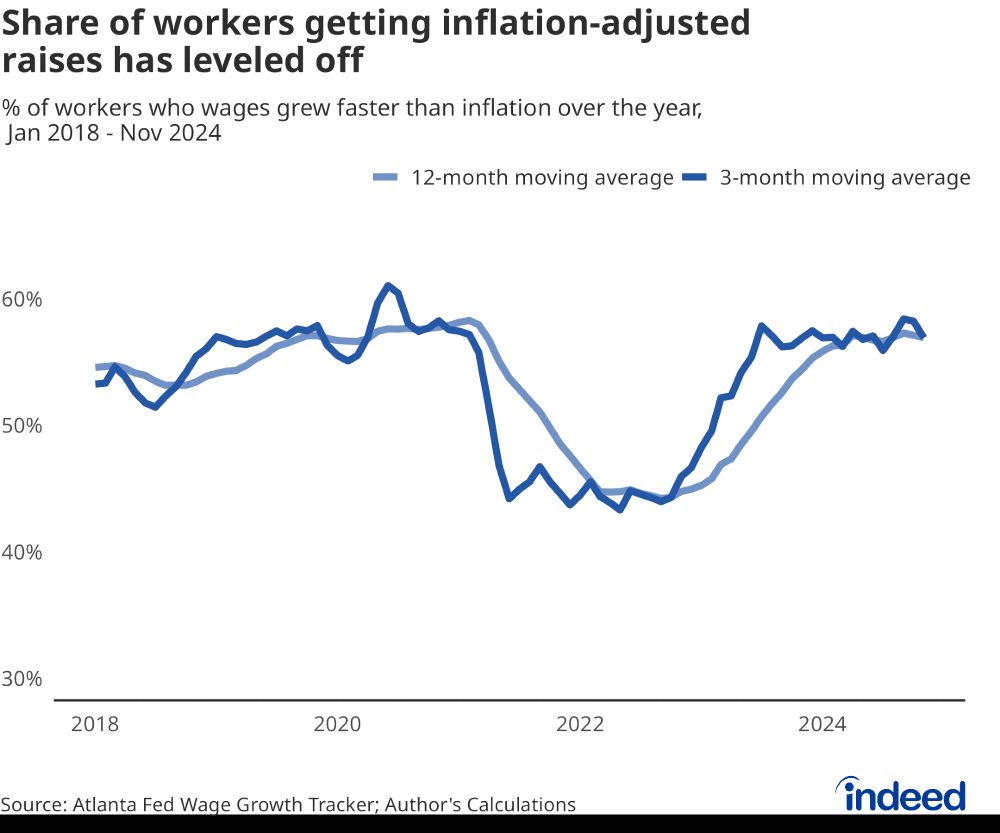
That is much higher than a 43% low in May 2022. However, the share has leveled off since summer 2023 and now sits around pre-pandemic levels.
Indeed data shows a similar story: employer demand for holiday hires fell below the trend in November. Holiday hiring kicked off around the same time in 2024 and rose in line with 2019 levels before flattening in November.
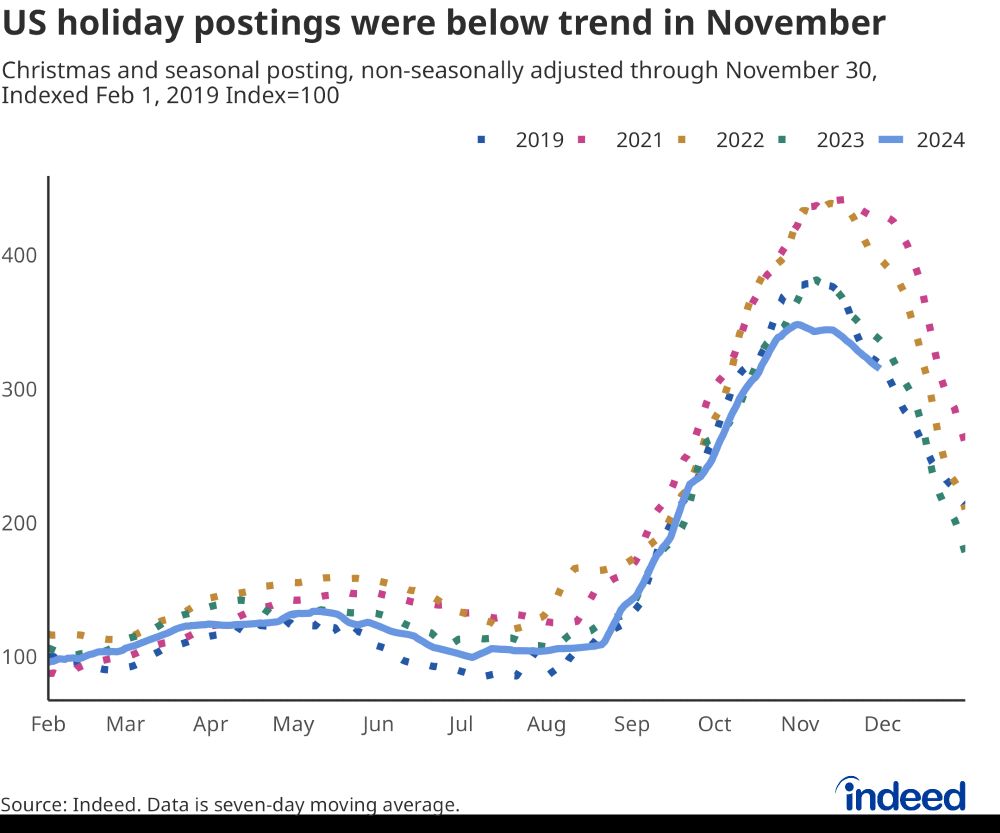
Indeed data shows a similar story: employer demand for holiday hires fell below the trend in November. Holiday hiring kicked off around the same time in 2024 and rose in line with 2019 levels before flattening in November.
Consumer spending reports have still been encouraging, but good to keep an eye on.
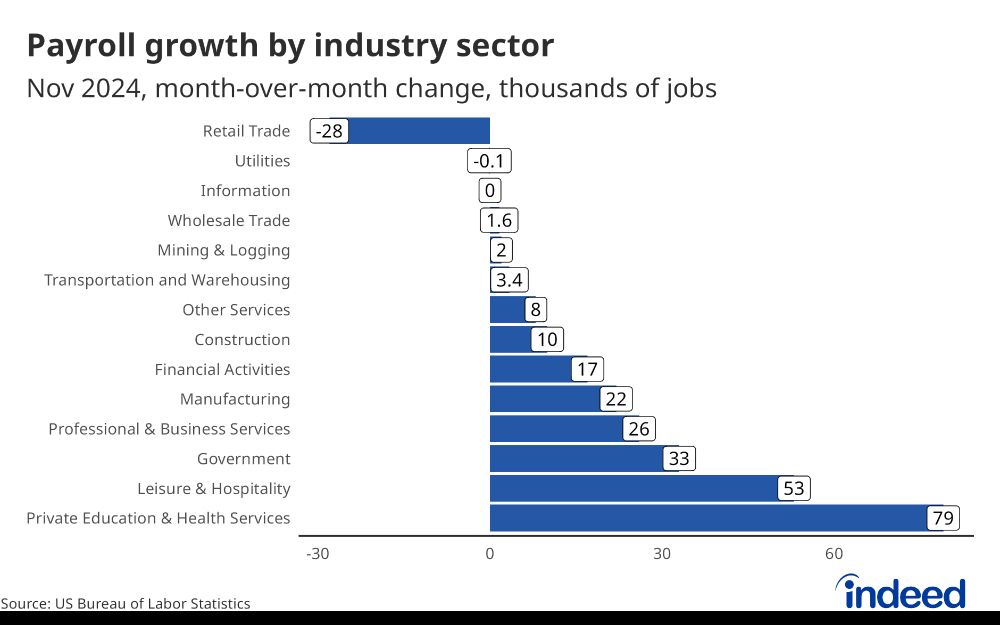
Consumer spending reports have still been encouraging, but good to keep an eye on.
Concerning factors:
- Prime-age EPOP is down half a percentage point in the last two months.
- The unemployment rate ticked up (4.1% > 4.2%) while civilian labor force declined (-193,000). Unemployment is still low, but it is not encouraging to see the labor force shrink.

Concerning factors:
- Prime-age EPOP is down half a percentage point in the last two months.
- The unemployment rate ticked up (4.1% > 4.2%) while civilian labor force declined (-193,000). Unemployment is still low, but it is not encouraging to see the labor force shrink.
Good:
- The (literal) clouds that overshadowed October's report parted, added +227,000 jobs in Nov, Oct revised up to +36,000 (from the initial report of +12,000).
- Average hourly earnings have cooled but remain robust which signals continued demand for workers.


Good:
- The (literal) clouds that overshadowed October's report parted, added +227,000 jobs in Nov, Oct revised up to +36,000 (from the initial report of +12,000).
- Average hourly earnings have cooled but remain robust which signals continued demand for workers.
Employers have pulled back on hiring, but they are keeping their existing workers.
Layoffs are lower than (or the same as) pre-pandemic in just about every industry.

Employers have pulled back on hiring, but they are keeping their existing workers.
Layoffs are lower than (or the same as) pre-pandemic in just about every industry.
- Job openings ticked up to 7.7 million (from 7.4).
- The quits rate rose for the first time in 17 months.
- Layoff rate = 1.0 -> Below pre-pandemic all-time lows.
Hires rate weak at 3.3%, but could be a blip given slight pickup in recent months.
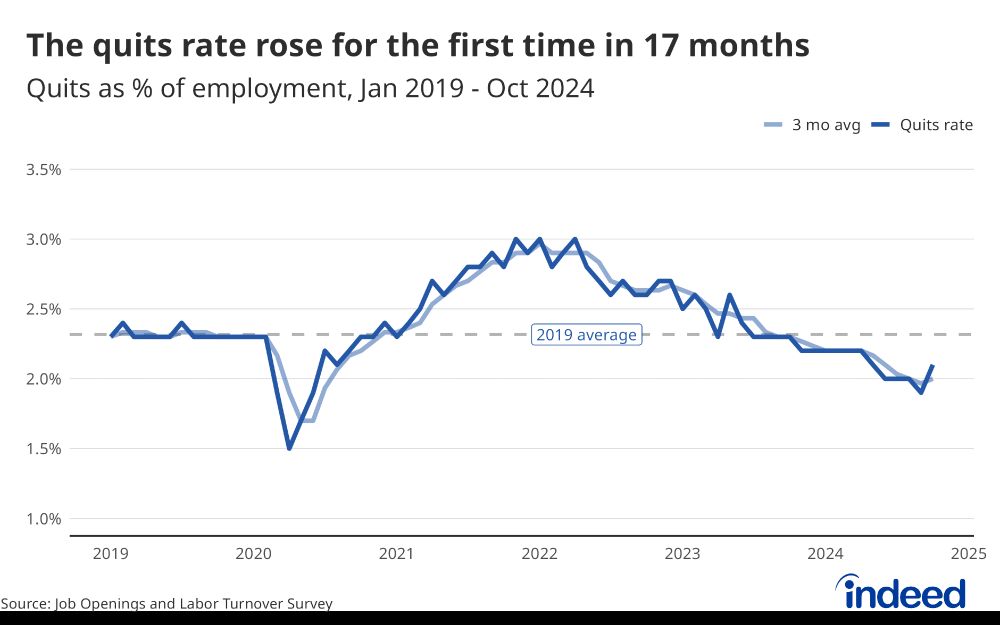

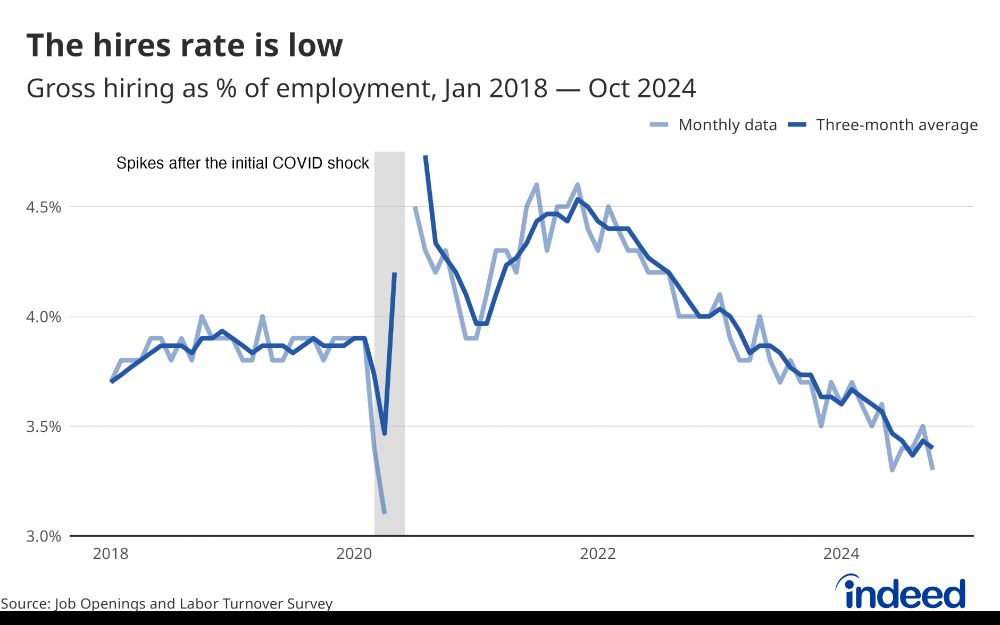
- Job openings ticked up to 7.7 million (from 7.4).
- The quits rate rose for the first time in 17 months.
- Layoff rate = 1.0 -> Below pre-pandemic all-time lows.
Hires rate weak at 3.3%, but could be a blip given slight pickup in recent months.


